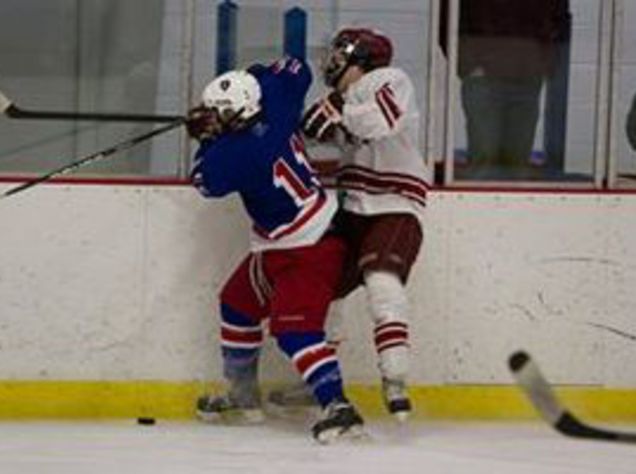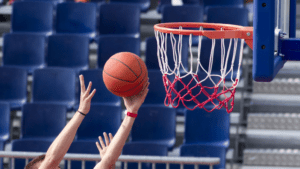In hockey, certain actions or behaviors are not allowed and will result in a penalty. If you have a penalty called against you, you will have to sit and wait in the penalty box. The length of time that you sit in the penalty box is determined by how severe the penalty was. It is not uncommon in hockey for players from both teams to have to sit in the penalty box at the same time. When a player serves time for a penalty, his team must play shorthanded. This results in a power play for the other team and is an advantageous scoring opportunity. In some cases, two players from the same team will serve a penalty at the same time, meaning that their team must play with only four people on the ice including the goalkeeper. If a third penalty is called against the same team the third penalty can only be served after one of the first two has expired. This is to ensure that no team ever has to play more than two men down at a time. With a delayed penalty, the referee waits to blow the whistle until the team who drew the penalty loses possession of the puck.
Here are the classifications of penalties, and a brief description of each different type:
Minor Penalty: Two minutes. If the shorthanded team is scored on before the penalty is up, the player in the box is released.
- Boarding – driving, checking, throwing, or tripping a player violently into the boards
- Charging – taking more than three steps before checking the opponent or leaving your feet when checking the opponent
- Cross checking – checking the opponent with both hands on the stick when no part of the stick is touching the ice
- Holding – holding the opponent with the hands or stick. Also can be called for holding the opponent’s stick
- Hooking – hooking the stick around the opponent to prevent them from moving
- Interference – illegal contact with a player not in possession of the puck to impede his progress
- Slashing – hitting or swinging the stick at another player
- Spearing – stabbing the opponent with the point of the stick blade
- Roughing – unnecessary roughness; engaging a fight, or shoving
- Tripping – using any part of the body or stick to cause the opponent to trip
- Unsportsmanlike conduct
Major Penalty: Five minutes. Called for fighting or when minor penalties are called with the intent to injure.
Misconduct: 10 minutes. Called against an individual, not a team, so adding a substitute player is permitted. Major high sticking, slashing, cross-checking and spearing penalties carry an automatic misconduct.
Penalty Shot: Awarded when a player is fouled from behind on a breakaway with no one in front of him but the goalie. Also given when a defenseman purposely moves the net to prevent a goal, or for purposely lying on the puck around the net.
Goaltender’s Penalty: If a penalty is called on the goalie, another player from the team that is currently on the ice will serve time in the penalty box.
Match Penalty: The player is kicked out of the game and must immediately go to the locker room.
Hockey is a physical sport, so penalties are very common. Just try to keep your behavior under control so that you don’t leave your team shorthanded! For more hockey tips and articles, check out CoachUp’s hockey resources.
CoachUp is the safest and easiest way to find a private sports coach. With our 100% money-back guarantee and vetted coaches, anyone can achieve their full athletic potential. Find your perfect private coach today and become the athlete you want to be!
How useful was this post?
Click on a star to rate it!
Average rating 4 / 5. Vote count: 7
No votes so far! Be the first to rate this post.



